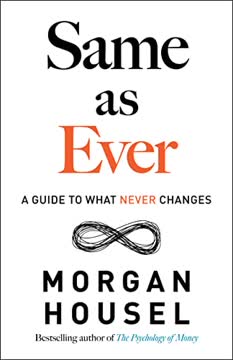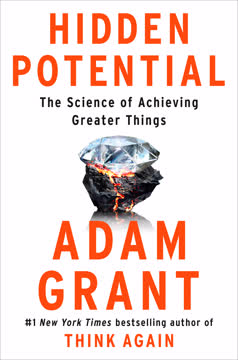Key Takeaways
1. Happiness is a direction, not a destination
Happiness is not the goal, and unhappiness is not the enemy.
Reframe your perspective. Happiness is not an end state to be achieved, but rather a continuous journey of growth and improvement. Understand that both positive and negative emotions serve important purposes in our lives. Negative emotions like fear, anger, and sadness help us survive and learn, while positive emotions reward us for beneficial behaviors.
Embrace the full spectrum of emotions. Instead of trying to eliminate unhappiness, learn to manage and learn from it. Recognize that complete happiness is unattainable, but you can always become happier. This shift in mindset allows for a more realistic and sustainable approach to well-being.
Key components of happiness:
- Enjoyment: Finding pleasure in activities and relationships
- Satisfaction: Feeling accomplished and fulfilled
- Purpose: Having a sense of meaning and direction in life
2. Manage your emotions through metacognition
Your emotions are signals to your conscious brain that something is going on that requires your attention and action—that's all they are.
Practice metacognition. This involves observing your emotions consciously, separating them from your behavior, and refusing to be controlled by them. By doing so, you can make more intentional choices about how to respond to situations, rather than reacting impulsively.
Develop emotional awareness. Keep a journal to track your emotions and their triggers. This practice helps you understand patterns in your emotional responses and gives you more control over them. When faced with strong emotions, take a step back and observe them as if they were happening to someone else. This detachment allows for a more rational assessment of the situation.
Strategies for metacognition:
- Pause and reflect before reacting
- Label your emotions without judgment
- Consider alternative perspectives on the situation
3. Choose positive emotions to replace negative ones
You often don't have to accept the emotion you feel first. Rather, you can substitute a better one that you want.
Practice emotional substitution. When faced with negative emotions, consciously choose to focus on more positive alternatives. This doesn't mean suppressing or ignoring negative feelings, but rather redirecting your attention to more constructive emotional states.
Cultivate positive emotions. Actively work on developing gratitude, humor, hope, and compassion. These emotions can serve as powerful antidotes to negative states like anger, fear, and sadness. Regular practice of these positive emotions can lead to lasting changes in your overall emotional landscape.
Techniques for emotional substitution:
- Gratitude journaling
- Seeking out humor in difficult situations
- Reframing challenges as opportunities for growth
- Practicing compassion for yourself and others
4. Focus outward, not inward, for greater well-being
Adopting more of an outward focus on life—observing the world and caring for other people without making so much of life about yourself—is one of the best ways to increase your own well-being.
Shift your attention. Instead of constantly focusing on yourself and your own concerns, make a conscious effort to pay more attention to the world around you and the needs of others. This outward focus can lead to greater happiness and a sense of connection.
Reduce self-objectification. Avoid excessive self-reflection and comparison to others. Instead, engage in activities that allow you to forget yourself and become fully immersed in the present moment. This can include hobbies, volunteer work, or simply spending time in nature.
Ways to cultivate an outward focus:
- Practice active listening in conversations
- Engage in acts of kindness for others
- Spend time in awe-inspiring natural settings
- Limit time spent on social media and self-reflection
5. Build stronger family bonds through understanding and communication
Don't avoid conflict, which is your family's opportunity to learn and grow if you understand where it originates and manage it appropriately.
Embrace healthy conflict. Recognize that disagreements and tensions within families are normal and can lead to growth when handled constructively. Instead of avoiding difficult conversations, approach them as opportunities for deeper understanding and connection.
Improve communication. Practice active listening and express yourself clearly and honestly. Hold regular family meetings to discuss issues before they become major problems. Be willing to compromise and find solutions that work for everyone involved.
Strategies for strengthening family bonds:
- Practice forgiveness and let go of past grievances
- Show appreciation for each family member's unique qualities
- Create shared experiences and traditions
- Be willing to adapt and evolve as family dynamics change
6. Cultivate deep, meaningful friendships
Friendship is the second pillar of building a happier life. Friends can lighten the load of the heaviest days.
Prioritize quality over quantity. Focus on developing a few deep, meaningful friendships rather than maintaining a large network of superficial connections. Invest time and effort in relationships that are mutually supportive and enriching.
Be vulnerable and authentic. Allow yourself to be truly known by your friends, sharing both your strengths and weaknesses. This openness creates the foundation for genuine connection and support.
Keys to building strong friendships:
- Regular, meaningful communication
- Shared experiences and memories
- Mutual trust and support
- Acceptance of differences and imperfections
7. Find purpose and satisfaction in your work
Work should bring happiness benefits beyond just giving us the resources we need to survive and support our families.
Seek intrinsic rewards. Look for work that provides a sense of purpose, allows you to use your skills, and contributes to something larger than yourself. While extrinsic rewards like pay and benefits are important, they alone are not sufficient for long-term satisfaction.
Cultivate a growth mindset. View your work as an opportunity for continuous learning and improvement. Set challenging but achievable goals, and celebrate your progress along the way.
Elements of satisfying work:
- Alignment with personal values
- Opportunities for skill development
- Positive relationships with colleagues
- A sense of autonomy and control
8. Develop a transcendent perspective on life
A transcendental practice requires learning. Start reading widely from the wisdom literatures, including your own tradition, if you have one.
Explore spiritual and philosophical traditions. Engage with ideas and practices that encourage you to look beyond your immediate concerns and consider the larger questions of life. This can include religious teachings, philosophy, or secular approaches to meaning and purpose.
Cultivate awe and wonder. Make time to experience and appreciate the beauty and complexity of the world around you. This can help put your personal struggles into perspective and foster a sense of connection to something larger than yourself.
Ways to develop transcendence:
- Regular meditation or contemplative practice
- Spending time in nature
- Engaging in acts of service for others
- Studying wisdom literature from various traditions
Last updated:
FAQ
What's Build the Life You Want about?
- Focus on Happiness: The book explores happiness as a direction rather than a fixed state, combining personal stories from Oprah Winfrey with research insights from Arthur C. Brooks.
- Emotional Management: It emphasizes managing emotions through metacognition and emotional substitution, teaching readers to focus less on themselves for greater happiness.
- Four Pillars of Happiness: Identifies family, friendship, work, and faith as essential areas for achieving lasting happiness, with each chapter offering guidance on cultivating these areas.
Why should I read Build the Life You Want?
- Research-Based Insights: Grounded in scientific research, the book offers credible advice for improving emotional well-being, enriched by Arthur Brooks' expertise.
- Personal Stories: Oprah Winfrey's experiences provide relatable narratives that illustrate the book's principles, making the content engaging and applicable.
- Actionable Strategies: Offers practical strategies for readers to implement in their daily lives, encouraging active work on emotional health.
What are the key takeaways of Build the Life You Want?
- Happiness is a Journey: Emphasizes that happiness is a continuous journey, encouraging incremental improvements rather than seeking a perfect state.
- Manage Your Emotions: Understanding and managing emotions through metacognition can lead to greater happiness by allowing conscious responses.
- Focus on Relationships: Strong relationships with family, friends, and through work are essential for happiness, leading to deeper satisfaction and fulfillment.
What specific methods does Build the Life You Want recommend for improving happiness?
- Metacognition: Involves thinking about your thinking and emotions, allowing separation of feelings from actions for more conscious choices.
- Emotional Substitution: Suggests substituting negative emotions with positive ones like gratitude or humor to manage feelings of anger or sadness.
- Outward Focus: Encourages focusing less on oneself and more on others, enhancing personal happiness through acts of kindness and service.
How does Build the Life You Want define happiness?
- Three Macronutrients: Defines happiness as a combination of enjoyment, satisfaction, and purpose, requiring balance for a fulfilling life.
- Enjoyment vs. Pleasure: Differentiates between deeper enjoyment and fleeting pleasure, arguing true happiness comes from meaningful experiences.
- Purpose as Essential: Asserts that having a sense of meaning in life helps navigate challenges and find fulfillment.
What are the best quotes from Build the Life You Want and what do they mean?
- “Happiness is not the goal...”: Encourages embracing both positive and negative emotions as part of the human experience, viewing happiness as a journey.
- “Your emotions are signals...”: Highlights the importance of recognizing emotions as valuable information, empowering thoughtful responses.
- “You can get happier...”: Reassures that happiness is attainable despite challenges, emphasizing personal agency and emotional management.
What is the role of family in Build the Life You Want?
- Family as a Pillar: Identified as one of the four essential pillars of happiness, providing meaning and support crucial for emotional well-being.
- Conflict is Normal: Acknowledges that family conflict is common and can be an opportunity for growth through open communication.
- Unconditional Love: Emphasizes the unique and powerful nature of family love, recognizing its complexities for better relationship navigation.
How does Build the Life You Want address friendship?
- Deep Connections Matter: Argues that deep, meaningful friendships are essential for happiness, significantly impacting individual well-being.
- Friendship Challenges: Discusses challenges like personality differences and technology's impact on social interactions.
- Actionable Strategies: Provides strategies for cultivating friendships, prioritizing quality over quantity and engaging in honest communication.
What does Build the Life You Want say about work?
- Work as Love: Describes work as “love made visible,” suggesting finding meaning in one’s job leads to greater happiness.
- Intrinsic vs. Extrinsic Rewards: Emphasizes intrinsic rewards like personal fulfillment over extrinsic ones like money and status.
- Career Paths: Encourages exploring career models that align with values and life goals, such as linear or spiral paths.
What spiritual practices are recommended in Build the Life You Want?
- Mindfulness and Presence: Advocates for mindfulness practices to stay present, reducing anxiety and enhancing well-being.
- Nature Connection: Highlights spending time in nature as a powerful way to foster transcendental experiences and improve mental health.
- Community and Faith: Encourages engaging in spiritual communities and exploring personal beliefs for a sense of purpose and connection.
What challenges to happiness does Build the Life You Want address?
- Conflict in Relationships: Discusses managing family conflict constructively through open communication and understanding.
- Negativity Virus: Explains how negative emotions can spread within families, offering strategies to protect personal happiness.
- Forgiveness: Emphasizes forgiveness in maintaining healthy relationships, outlining strategies and benefits for both parties.
How can I apply the concepts from Build the Life You Want in my daily life?
- Practice Gratitude: Keep a gratitude journal to shift focus from negative to positive emotions, enhancing overall outlook.
- Engage in Acts of Kindness: Help others through small gestures or larger commitments, focusing on well-being to enhance personal happiness.
- Reflect on Your Emotions: Use metacognition to observe feelings and reactions, managing emotions effectively for better choices.
Review Summary
Build the Life You Want received mixed reviews. Many praised its scientific approach to happiness and practical advice on emotional management. Some found it insightful and transformative, while others criticized it as oversimplified and out of touch. Positive reviews highlighted the book's emphasis on family, friendship, work, and faith. Critical reviews noted a lack of new information and questioned its relevance to diverse experiences. Oprah's minimal involvement was both praised and criticized. Overall, readers found varying degrees of value in the book's approach to happiness and life improvement.
Similar Books










Download PDF
Download EPUB
.epub digital book format is ideal for reading ebooks on phones, tablets, and e-readers.







